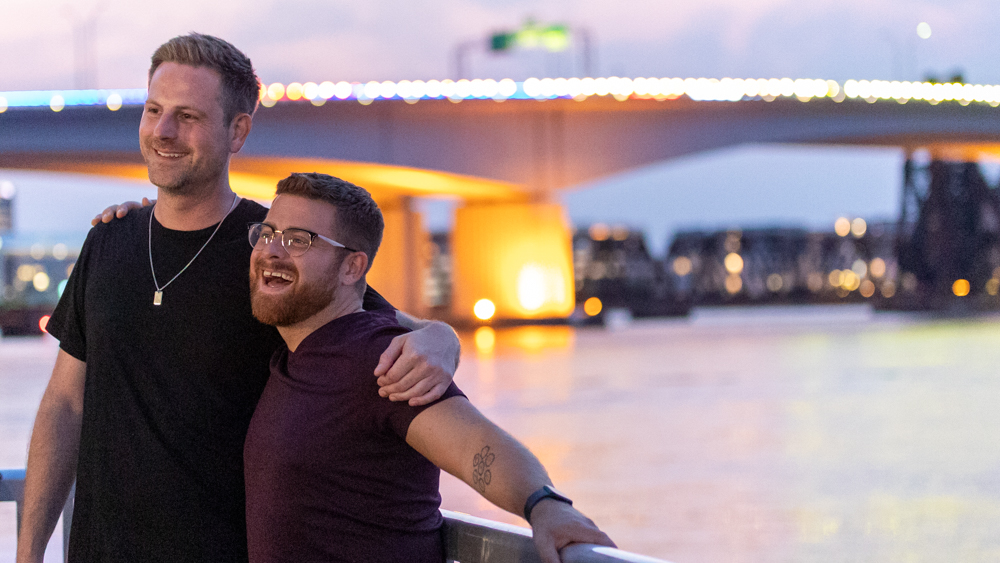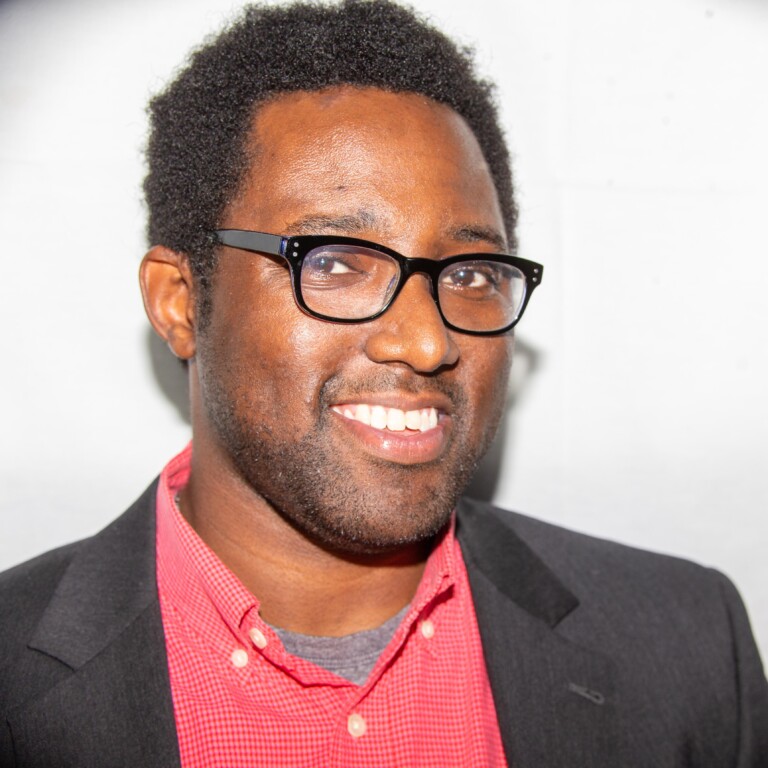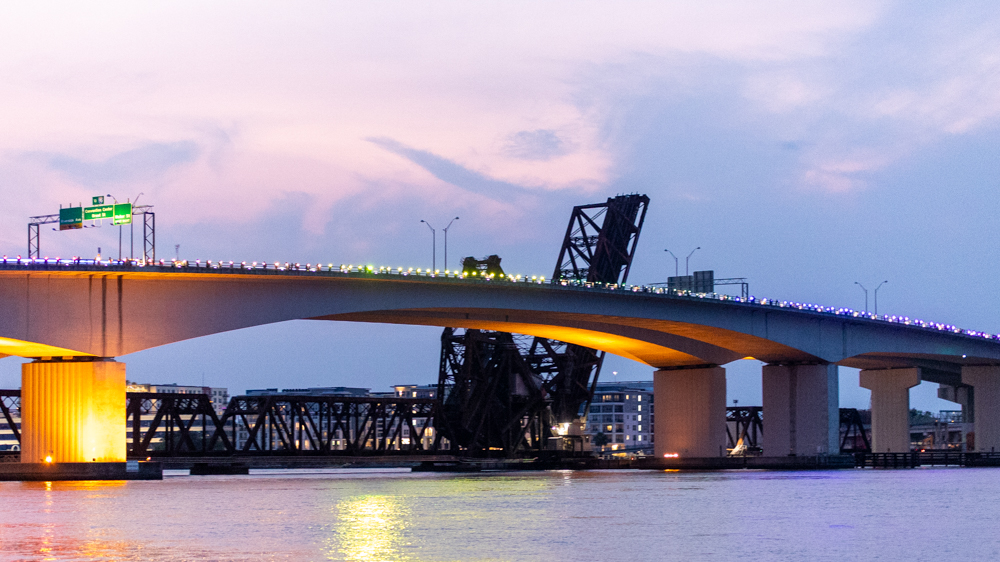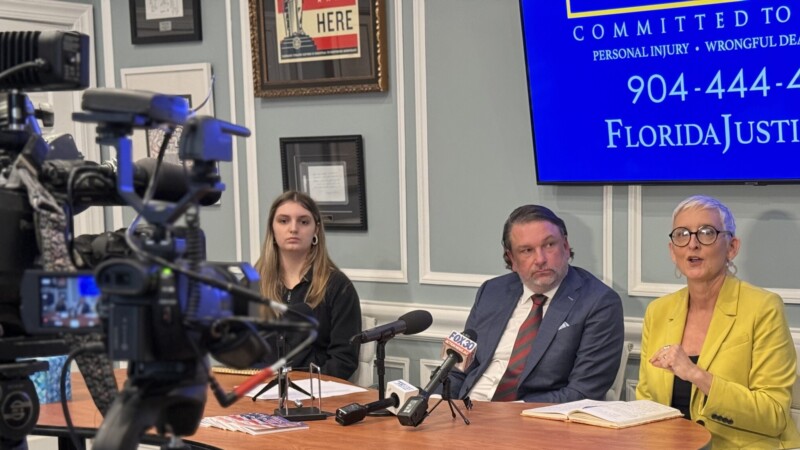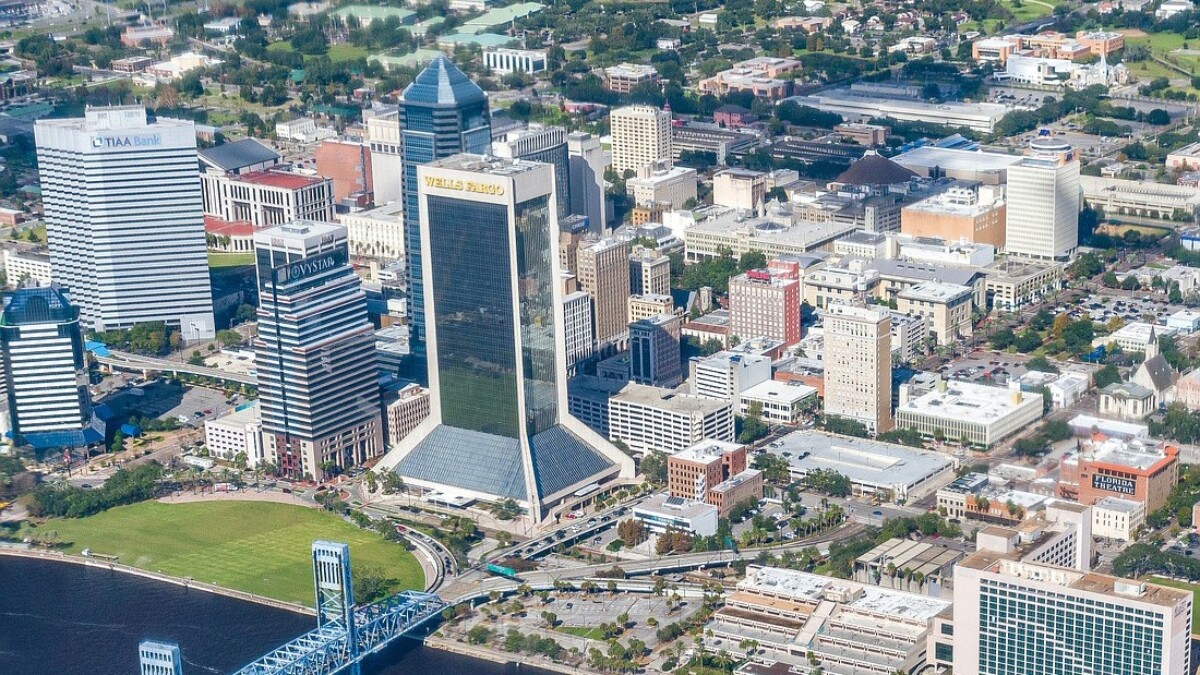The first night of Pride Month left some in Downtown Jacksonville perplexed and others persistent.
Pride in our Freedoms – Community Bridge lighting was slated to feature about 120 people holding flashlights Sunday along the western sidewalk of the Main Street Bridge to celebrate Northeast Florida’s LGBTQ community.
Instead, the drawbridge was raised at about 8 p.m., just as organizers and demonstrators marched toward the foot of the Main Street Bridge.
No vessel was in the St. Johns River at the time.
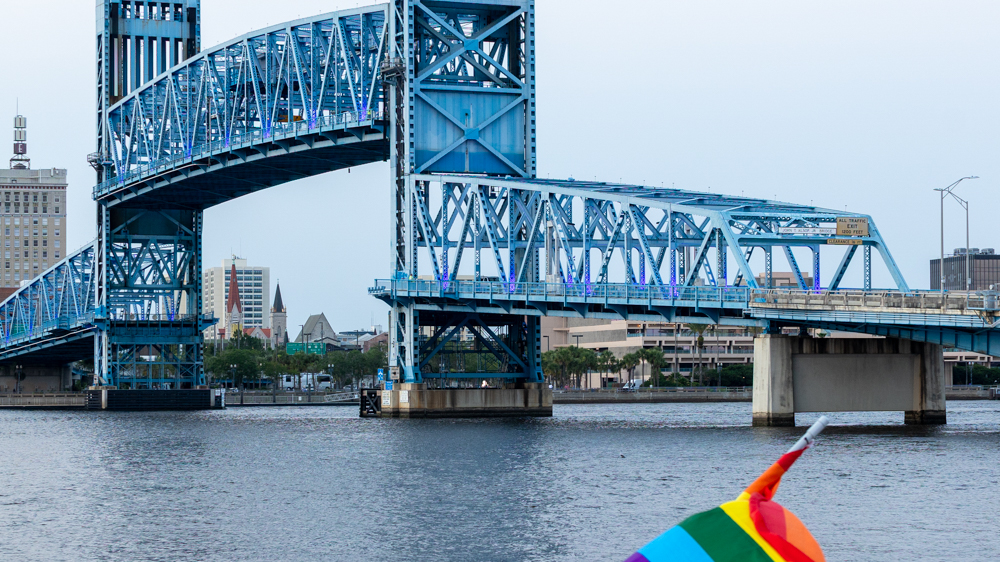
The Florida Department of Transportation did not respond to questions by the time of publication Monday.
Typically, permits are requested through the city of Jacksonville. The city coordinates with the Jacksonville Sheriff’s Office. For state structures, such as bridges, the Florida Department of Transportation approves the request.
Events with fewer than 500 people that occur on public sidewalks do not require a city permit.
The Acosta Bridge Pride March that took place Sunday evening prior to the community bridge lighting was another event that did not require a city permit.
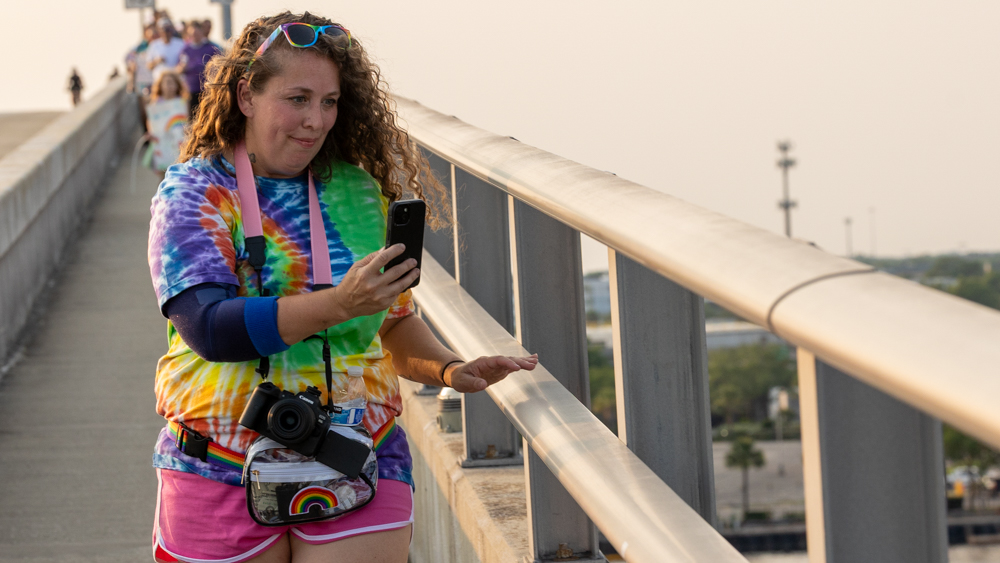
“We knew this was a possibility,” said Pride in our Freedoms co-organizer Matt McAllister. “We made sure this morning we had a Plan B and didn’t tell anyone about it.”
That option was to hold the light demonstration along the Acosta Bridge.
The people-powered bridge lighting began in 2024 in response to the Florida Department of Transportation refusing to allow the Acosta Bridge to be lit in a rainbow during Pride Month. Instead, the state lit the bridge in red, white and blue as part of a summertime observance of freedom.
The Florida Department of Transportation controls the six bridges that traverse the St. Johns River in Duval County. For years, the Jacksonville Transportation Authority would light the Acosta Bridge to celebrate community organizations and initiatives.
Sunday, the state again lit the Acosta Bridge in red, white and blue. But for 20 minutes, the Acosta also was awash in orange, red, yellow, green, blue and purple.
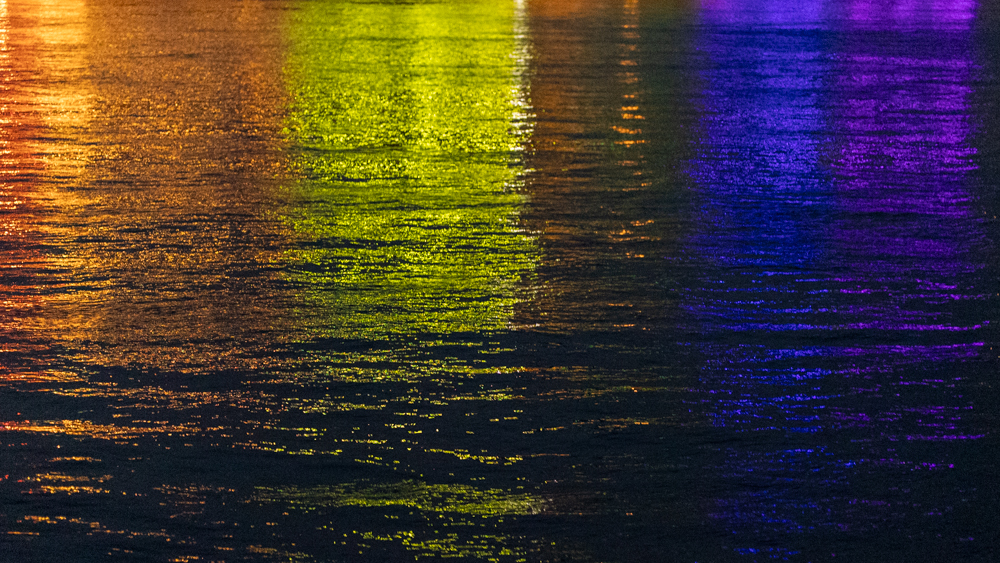
McAllister and fellow organizer Andrew Bergee says the secondary light show was the perfect example of pride. To them, it’s about not being denied, finding a way despite obstacles and sacrificing for others.
Jacksonville hosts most of its local Pride-related events and festivities in October, when temperatures are more hospitable. However, weekend rains meant Sunday’s weather for both the Pride in our Freedoms light show and Acosta Bridge Pride March was cooler than last fall’s Jax River City Pride Parade.
The Acosta Bridge Pride March featured about 200 people dressed in Pride-themed paraphernalia. It took place nearly two hours before the light parade.

“This event brings in a lot of allies, a lot of religious organizations, a lot of groups from intersecting issues that have come to support us and show us that we are not alone,” says Amy Glassman, a local activist who organized the Pride March. “Even if in this state, there are issues that are affecting our rights, in this city, we can find love and we can find support.”
“We have an opportunity to be a city on a hill.”
The marchers lived in Duval, St. Johns and Clay counties. Some were members of the LGBTQ community; others were allies.
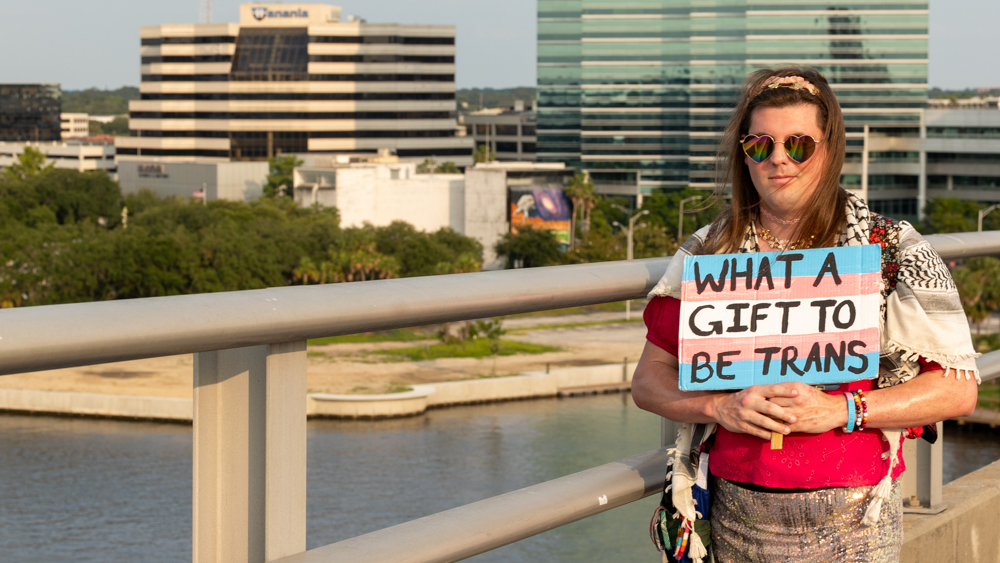
Some, like Fleming Island resident Echo Nova, held signs that championed trans visibility. Others, like Ponte Vedra Beach residents Cheryl Shodd and Marion Earnest, carried a rainbow flag. Glassman wore rainbow-colored socks.
“We have been married for 10 years and are appreciative of the right to be married,” said Earnest, who walked along her wife as well as longtime friend Richard Ceriello. “We want to share our love.”
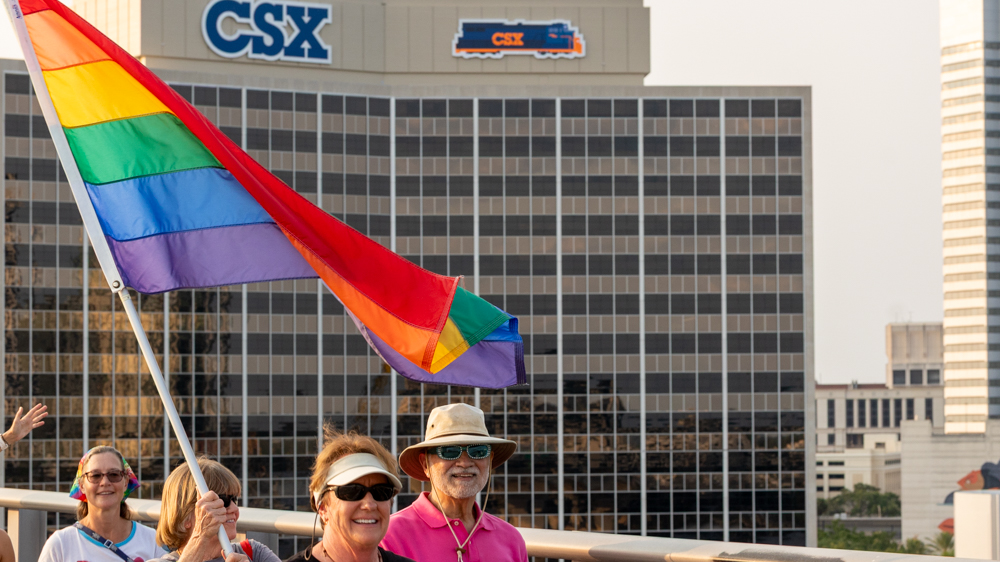
Alba Rosa, Melissa Devine and Debra McGuckin have lived in Jacksonville for decades and raised children here. Rosa keeps an image the Florida Times-Union captured of her in 2009 with a rainbow flag draped over her shoulders on her cellphone.
Moments before the community light show was slated for the Main Street Bridge, Rosa said Jacksonville has become more welcoming to the LGBTQ community in the years since the newspaper photo was captured. McGuckin added that this community not only has more allies, but they are more vocal in their support.
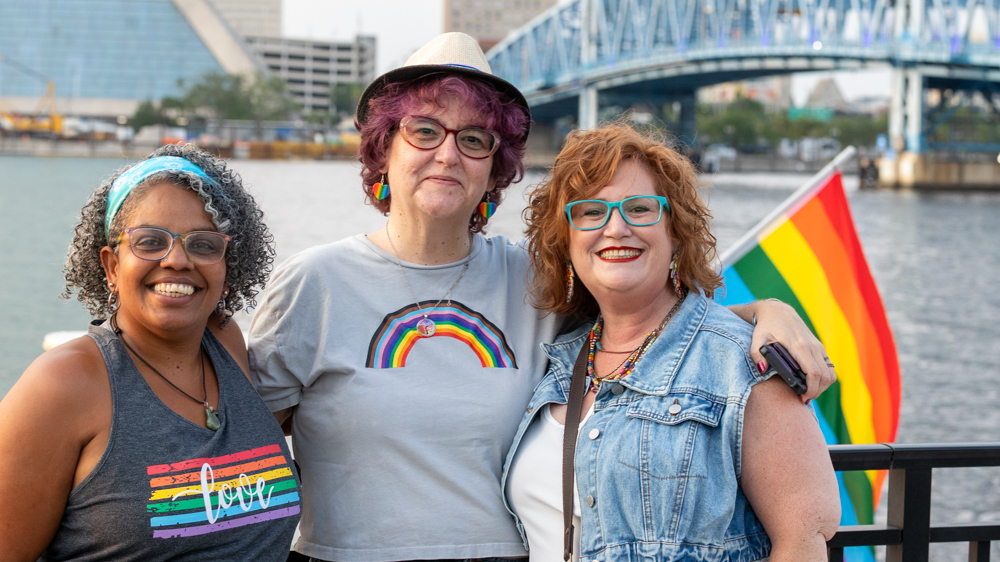
When the Main Street Bridge was raised, seemingly without explanation, the trio were disappointed but not dismayed.
“It sent a clear signal,” Devine said. “It was not a protest. It was a walk of pride. … There are no boats coming, so what was the reason for the drawbridge to be up?”
“You’re not going to keep us down,” McGuckin added. “You’re not going to keep us quiet!”
On May 27, the Florida Department of Transportation announced that the Main Street Bridge would be closed for five days in May and June as part of routine maintenance, including on Sunday evening.
The work was slated to close the Main Street Bridge between 9 p.m. and 5 a.m. to conduct ultrasonic testing of the cables that raise and lower the drawbridge. However, at 9:30 p.m. Sunday, drivers still traversed the blue bridge that has been a part of Downtown Jacksonville for the last 84 years.

This may be Skyler Bennett’s first Pride in Jacksonville, but the facts about the Main Street Bridge are immaterial to him. He and his husband, James Wilhoit, will not be denied.
Bennett and Wilhoit moved to Jacksonville earlier this year from Atlanta.
“Yes, it’s said,” Wilhoit said. “Knowing how Florida is, it’s disappointing to know there is this amount of hate. It’s one of those things. We moved to the other bridge because you can’t raise this one!”
